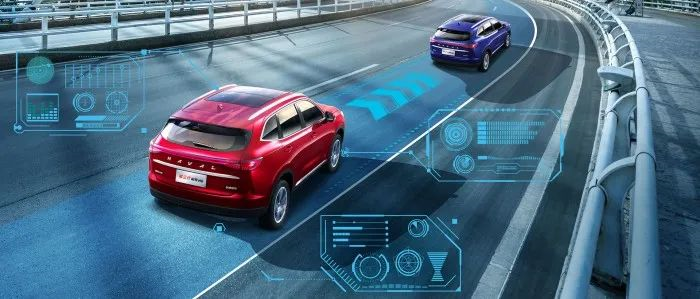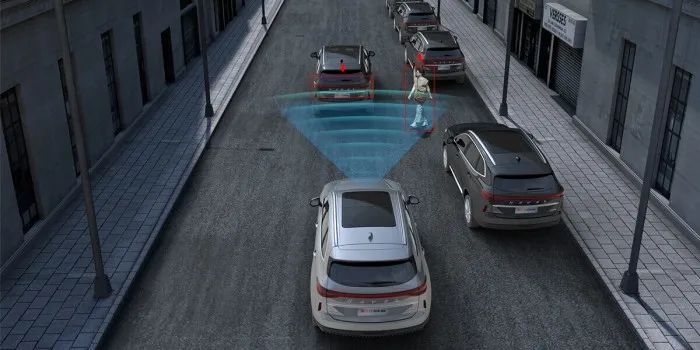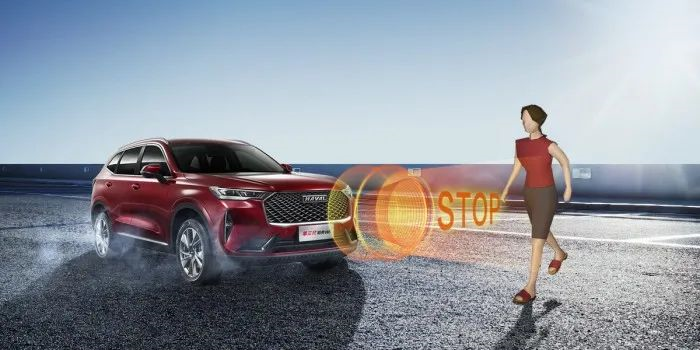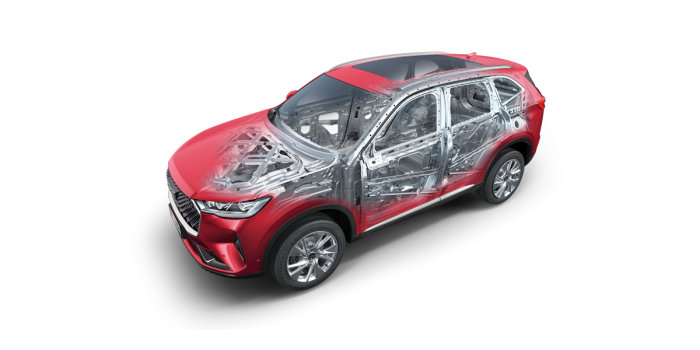*Author: Xuan Wang
In complex traffic situations in China, many drivers have left terrifying memories at intersections. I believe that even when the signal light is green, all experienced drivers will instinctively step on the brake when driving at an intersection, because a pedestrian who doesn’t follow the rules might suddenly appear, forcing you to take emergency braking. If you don’t brake in time, you might lose everything. This kind of thing has become so common that people are always on the edge of being dominated by the fear brought by intersections.
Full-scenario AEB allows drivers to stay away from “ghost heads”
We are all participants in China’s road traffic, and no one wants accidents to happen in travel scenarios, but often things don’t go as planned. The Institute of Huajing Industry Research shows that the number of traffic accidents nationwide in 2019 was 247,646, an increase of 2709 from 2018, a year-on-year increase of 1.11%. The proportion of accidents involving pedestrians and non-motorized vehicles was close to 12%, and these kinds of accidents occurred frequently at intersections.
The increasing number of motor vehicles undoubtedly increases the probability of traffic accidents, so how to reduce the incidence of traffic accidents has become a problem that the entire automotive industry needs to consider. In the era of intelligent cars, the third-generation Haval H6 has found a solution, which is the full-scenario AEB technology that leads in the same level.

Although regular AEB technology can help drivers avoid potential rear-end accidents, its usage scenarios are too single. As the saying goes, “it’s easy to avoid cars, but hard to prevent people,” most AEBs are powerless in the face of pedestrians who suddenly appear from the view blind spot of an intersection. At this time, what is tested is the driver’s emergency response speed. The full-scenario AEB on the third-generation Haval H6 is a technology designed to tackle such scenarios, covering various scenes such as highways, streets, intersections, and parking lots.

The full-scenario AEB technology of the third-generation Haval H6 detects the status of front vehicles, pedestrians, bicycles, and intersections through cameras. When sudden situations occur where vehicles, pedestrians, bicycles, and the intersection area need to be alerted or in case the driver fails to step on the brake in time, the system will automatically brake the car. At the same time, by expanding the application scenarios of active safety technology, Great Wall Motors has established a “triple-dimensional comprehensive safety design concept”–passenger safety, pedestrian safety, and vehicle safety (3DP).In terms of underlying hardware, the third-generation Haval H6 is equipped with Mobileye’s intelligent forward control module and EyeQ4 chip to meet the ultra-high intensity requirements of over trillions of TOPS floating-point operations per second, which is consistent with the low energy consumption standard of around 3 watts for automotive system chips. More advanced computer vision processing algorithms, such as depth hierarchy networks and image models, are used to simultaneously process information from multiple cameras at a faster rate. In addition, this chip has passed the latest crash test and can ensure that it does not lose connection even after a vehicle collision, preventing sudden instability or power outages in the car’s circuits.
In addition to the main camera that implements the assisted driving function, the third-generation Haval H6 is also equipped with 14 radar sensors and 5 other cameras, including 2 millimeter-wave radar sensors, 12 ultrasonic radar sensors, 1 driving recorder camera, and 4 surround-view cameras. It can realize L2+ level assisted driving, 360-degree panoramic detection of the surrounding environment, 50-meter track reversing, and other functions, which are very helpful for both new and old drivers.
Observing the traffic accident reports in China over the past five years, it is found that the number of pedestrian and cyclist fatalities in motor vehicle accidents has been increasing year by year, magnifying the importance of the full-scenario AEB technology – pedestrians and non-motorized vehicles on the road also need active safety protection from cars.
The booming Internet industry has also spawned numerous food delivery and courier riders, making urban traffic conditions even more complex. Among the many traffic participants, pedestrians and non-motorized vehicle drivers are the most vulnerable group. Tests have shown that when the vehicle speed reaches 40 km/h, pedestrians can be seriously injured, and when the speed reaches 60 km/h, their lives can be taken.
The full-scenario AEB capability is undoubtedly strong, but to be responsible, if the speed is too fast or pedestrians suddenly appear, no technology can break through the physical limits to make the vehicle stop immediately. However, technology can make vehicles react faster than humans. The normal human reaction time is 0.3 seconds. If the speed reaches 60 km/h, then 0.3 seconds is enough to travel a distance of nearly 5 meters, which is enough to avoid a traffic accident or reduce the harm to pedestrians at the fastest speed possible. Therefore, the full-scenario AEB of the third-generation Haval H6 can not only provide “double protection” for drivers and pedestrians but also help both sides avoid property damage.
Intelligent and Safe FOTA Upgrade
The electronic architecture is propelling the automotive industry into the era of intelligence, and has also brought functions that can evolve in real-time to cars-OTA. However, OTA is just a common term for remote upgrade functions, which includes SOTA for software upgrades and FOTA for hardware upgrades. Compared to SOTA, FOTA requires higher requirements for the whole vehicle, such as the ability for all key hardware in the vehicle like chassis, power and auxiliary sensor driving to connect to the network and achieve online upgrade capabilities. The automaker also needs to accept the repositioning of its relationship with Tier 1 suppliers.

As the world’s first fuel SUV with FOTA capabilities, the third-generation Haval H6 has recently received FOTA upgrades for its intelligent safety features, which include the following four functions.
- Smart cornering. When the front road appears to be a bend and the car is moving fast, the system calculates a comfortable cornering speed based on the lane curvature, mitigating the discomfort caused by centrifugal force.
- ELK emergency lane-keeping. The system pre-emptively corrects the steering wheel to reduce collision risks when the driver unconsciously deviates from the lane or is about to change lanes, and when there is a risk of collision with oncoming or rear vehicles in the adjacent lane.
- RCW rear collision warning. When a target vehicle rapidly approaches the car in the same lane, the third-generation Haval H6 automatically triggers an alarm and warns the driver that a dangerous target is approaching, while alerting the vehicle behind to drive safely.
- RCTB reverse side brake. When reversing in a parking lot, if a lateral vehicle is present in the blind spot and there is a collision risk, the system will automatically apply the brake to avoid a collision.
What are the hardcore protections for the Haval H6 when accidents are unavoidable?
Friends who frequently follow traffic accident videos online will surely know that in China’s complex road conditions, there are many types of accidents that are difficult to comprehend, and they happen every day. So, what are the hardcore protection mechanisms of the third-generation Haval H6 when accidents are unavoidable?
Firstly, the vehicle has high body rigidity. The third-generation Haval H6 uses an enveloping framework and laser welding, with a high-strength steel application rate of 71.61%, and the highest strength of hot-formed steel reaching 2000 Mpa. The multi-channel power transmission strategy for the front, side, and rear ensure that the turning tube column can absorb the impact force and produce multi-level collapse when the vehicle collides strongly, forming the optimal deformation energy absorption zone + ultra-high strength passenger protection zone to protect the driver and passengers.
 # The third generation Haval H6 comes standard with 6 safety airbags, and cooperates with the world-class supplier Autoliv. The airbags can fully expand within 30 ms in the event of an accident, with a diameter of 690 mm for the driver’s airbag and a width of 400 mm for the front passenger airbag, providing large-scale protection. The side airbags can cover the chest and pelvis of the passengers when expanding. The curtain airbag is an OPW integral forming structure with excellent sealing performance, less gas leakage, and longer protection time for both front and rear passengers.
# The third generation Haval H6 comes standard with 6 safety airbags, and cooperates with the world-class supplier Autoliv. The airbags can fully expand within 30 ms in the event of an accident, with a diameter of 690 mm for the driver’s airbag and a width of 400 mm for the front passenger airbag, providing large-scale protection. The side airbags can cover the chest and pelvis of the passengers when expanding. The curtain airbag is an OPW integral forming structure with excellent sealing performance, less gas leakage, and longer protection time for both front and rear passengers.
In addition, the third-generation Haval H6 also has Bosch 9.3 ESP, RMI Anti-rollover system, BA brake assist, and intelligent evasion function that can actively avoid large trucks on the road.
Conclusion
Since the birth of the Haval brand, they have adhered to the concept of “safety first” in car making. The third-generation Haval H6 embodies this concept in every detail of the product, from full-scenario AEB, to various driving assistance functions, to hard-core passive safety configurations, all revealing Haval brand’s persistence in driving safety.
Traffic accidents have always been a pain point in the process of China’s traffic development. For efficiency and speed, we cannot go back to the beginning. However, today’s Chinese automotive industry has been given intelligence. I believe that in the future, the term “traffic accident” will definitely disappear into the depths of human memory with the development of intelligent automobiles.
This article is a translation by ChatGPT of a Chinese report from 42HOW. If you have any questions about it, please email bd@42how.com.
